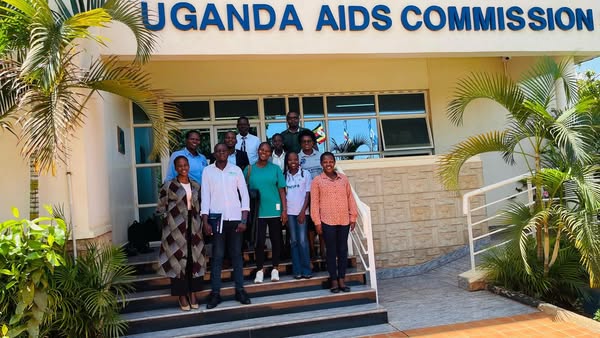
Uganda Aids Commission is set to face huge funding shortfall this financial year 2025/2026, this website has learnt.
Government has allocated only UGX 22.793 billion to the Uganda AIDS Commission (UAC) for the 2025/26 financial year, despite a glaring funding gap of UGX 604 billion caused by the United States’ suspension of foreign aid, particularly in the health sector.
Alex Byarugaba, Chairperson of the Presidential Affairs Committee of Parliament has expressed strong discontent over the government’s decision.He said although UAC’s budget reflects an increase from UGX 16.793 billion in FY2024/25 to UGX 22.793 billion, he described the increment as grossly inadequate when compared to the Commission’s unfunded priorities.
Byarugaba argues that effective dissemination of HIV prevention messages to vulnerable communities requires UGX 40.2 billion. However, only UGX 2 billion has been allocated, leaving a funding gap of UGX 38.2 billion. He emphasized that the interventions needed—such as message development, media outreach, community engagement, and impact assessments—are essential to reversing the resurgence in HIV infections.
“The Committee is alive to the fact that HIV/AIDS remains a national threat.There is an urgent need for continuous prevention messaging via radio, TV, social media, and during key HIV/AIDS events. Last year alone, Uganda spent UGX 1.3 trillion on HIV treatment and related commodities.”Byarugaba said.
He added that while the government has prioritized treatment, preventive efforts have been severely underfunded. The Committee recommended an immediate additional allocation of UGX 18.2 billion to strengthen public sensitization and proposed another UGX 20 billion in the medium term to bolster the fight against HIV.
In February 2025, Health Minister Dr. Ruth Aceng revealed to Parliament that Uganda had lost over UGX 604 billion in health sector funding, including UGX 243.2 billion specifically meant for HIV/AIDS programs.
Statistics presented to Parliament showed that while HIV infections had decreased from 94,000 in 2010 to 38,000 in 2020, the trend reversed in subsequent years—rising to 54,000 in 2021, 52,000 in 2022, and 51,516 in 2023, before dropping again to 38,000 in 2024. Annual HIV-related deaths, though declining, remain troubling, with 18,000 in 2021, 17,000 in 2022, and a spike to 20,000 in 2023.
“The reversal in infection and death rates indicates that HIV remains a serious threat,” Byarugaba warned. “Since HIV is largely a behavioral issue, prevention messaging must be a central focus.”
He further noted the disproportionate impact of HIV on women, with prevalence rates of 6.5% compared to 3.6% among men. Adolescent girls are particularly vulnerable, accounting for nearly four times more new infections than their male peers.
“The Committee finds this disparity unacceptable,” Byarugaba said. “The strategy must focus on reaching young people with targeted, impactful messages.”
Alfred Edakasi MP for Kaberamaido County noted that before the aid freeze, Uganda received up to UGX 1.9 trillion annually in HIV/AIDS funding. “Right now, only UGX 18 billion is on the table. Once existing stocks run out, the impact will be severe,” he warned.
Keefa Kiwanuka (Kiboga East) expressed shock that critical institutions like the UAC remain underfunded. “If push comes to shove, we should even consider salary cuts to prioritize essential sectors like HIV prevention,” he said.
For FY2025/26, the government proposes UGX 22.793 billion for the Uganda AIDS Commission—a 35.7% increase from the previous year. However, most of this growth is attributed to a 59.3% rise in the non-wage recurrent expenditure category, raising concerns about how much will directly support outreach and prevention.
